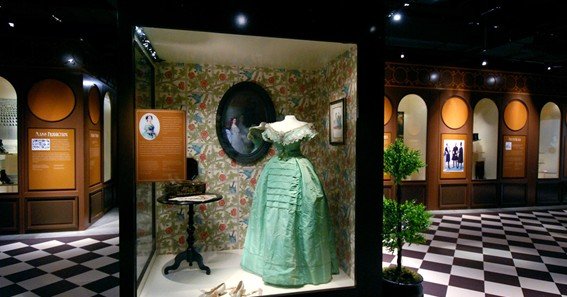The Deadly Elegance of the 1910s Green Dress
In the early 20th century, green dresses epitomized elegance and sophistication. However, beneath their vibrant hues lay a hidden danger: the use of arsenic-based dyes such as Scheele’s Green and Paris Green. These compounds, prized for their vivid color, were highly toxic and posed significant health risks to both the wearers and the artisans who crafted these garments.
The Toxic Truth Behind the Dye
Scheele’s Green, introduced in 1775, and its successor, Paris Green, developed in 1814, were arsenic-based pigments that became popular for their brilliant emerald shades. These dyes were not only used in textiles but also in wallpapers, paints, and even children’s toys. The toxicity of arsenic was well-known, yet the demand for these vibrant colors overshadowed the potential health hazards.
Exposure to arsenic-laden fabrics could lead to a range of health issues, from skin irritations to more severe conditions like organ damage and cancer. In some tragic cases, prolonged exposure proved fatal. One notable incident involved Matilda Scheurer, a 19-year-old factory worker who died in 1861 after inhaling arsenic dust while making artificial flowers.
Fashion vs. Safety: A Dangerous Trade-Off
The allure of the green dress was undeniable, symbolizing wealth and status. However, the health implications were severe. Wearers risked arsenic poisoning, especially if the fabric became damp, facilitating the absorption of the toxin through the skin. Moreover, the production process endangered workers who handled the dyes daily, often in poorly ventilated environments.
Despite mounting evidence of the dangers, the fashion industry was slow to respond. It wasn’t until the late 19th and early 20th centuries that safer dye alternatives emerged, leading to the gradual phasing out of arsenic-based pigments in clothing.
The Legacy of the Green Dress
Today, surviving garments from this era serve as a stark reminder of the intersection between fashion and health. Museums handling these dresses take special precautions due to their toxic nature. The story of the green dress underscores the importance of ethical practices in fashion, highlighting the need to prioritize safety over aesthetic appeal.
Frequently Asked Questions
Q1: What made the green dresses of the 1910s dangerous?
A1: The use of arsenic-based dyes like Scheele’s Green and Paris Green made these dresses toxic, posing health risks to both wearers and manufacturers.
Q2: Were people aware of the dangers at the time?
A2: While some health risks were known, the full extent of the dangers wasn’t widely acknowledged, and the popularity of the color often overshadowed safety concerns.
Q3: How did exposure to these dyes affect health?
A3: Exposure could lead to skin conditions, respiratory issues, organ damage, and in severe cases, death, particularly among workers handling the dyes.
Q4: When did the use of arsenic-based dyes decline?
A4: The decline began in the late 19th century as safer dye alternatives were developed and awareness of the health risks increased.
Q5: Are any of these dresses still around today?
A5: Yes, some are preserved in museum collections, often handled with care due to their toxic components.
The green dress from the 1910s stands as a testament to a time when fashion’s pursuit of beauty came at a significant human cost. Understanding this history is crucial in appreciating the strides made towards safer and more ethical fashion practices today.










